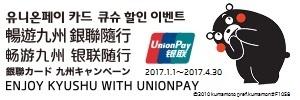ARTICLE
Chasing Musashi in Kumamoto
24/12/2015
- Author : Baronejenn
- Country of Origin : United States
- Age : 40's
- Gender :female
Myamoto Musashi is the stuff of epic, samurai legend. Just mention the word “samurai” and his name will surely arise in conversation. The traveling ronin (samurai without a master) who battled and won over 60 duels, developed the 2 sword fighting technique and who inspired countless samurai films comes to life in the city of Kumamoto, Japan.
Daniel was reading a book called “The Lone Warrior,” about Musashi’s life and we had seen a samurai exhibit at the SF Asian Art Museum that had displayed Musashi’s artwork and scrolls, so our interest about him was piqued. Seeing so many relics of the samurai class we decided a trip to Kumamoto was in order to find the most famous samurai in history.
When you hear about Musashi your mind starts to run wild. He was quite an amazing character. Unlike most samurai he preferred to work alone, without a lord to provide any protection. He was born into a culture of swordsmanship and Zen buddhism. He killed his first man when he was only thirteen with a wooden sword and left home very young to strike out on his own.
He was such a living legend that everyone wanted to duel him. He eventually went on to develop a fighting style that relied on psyching out his opponents mentally and strategically, probably to conserve his energy. He would show up really late to duels so by the time he’d get there his opponent was furious and unable to perform well. He would stand with his back to the sun so that the sun would blind his opponents eyes. He was famous for saying “you’ve already lost the battle” before it has begun – when noticing his opponents furious state. He would seek to battle people with various styles and weapons so he could understand his enemies. He did not believe in having a style but to use whatever tactics he needed to win. He would sometimes battle with just a wooden sword and developed defensive, evading techniques that would throw his opponents off guard. What confidence he must have had in himself! It’s inspiring.
He was also a gifted painter, practiced zen buddhism, shodo calligraphy, gardening and tea ceremony. Some of his paintings were of birds, nature and zen figures. He said “the way of the brush and the sword are one” and in his “Book of the Five Rings” he speaks about how important it is to see and observe when it comes to battle. No doubt studying the arts aided this ability and vice versa perhaps.
He landed in Kumamoto toward the end of his life when he finally took an offer to have a lord – Hosokawa Tadatoshi. But after Tadatoshi died Musashi went into the hills to meditate and deepen his practice of Zen. He spent the last years of his life in a cave at Reigando (which means “spirit rock cave”) where he wrote the “35 Articles of the art of war” and the “Gorin no Sho” – Book of the Five Rings, his most famous work which is still referenced today. The outline of the book follows the same 5 elements that appear in buddhism: ground (earth) water, fire, wind (air), the void.
Of all places related to Musashi, the Reigando cave is a must-see. The Reigando cave was a temple long before Musashi made it his home. Various figures in history also came to the cave to meditate and spiritually train.
People would travel to the cave to pray to a statue in the wall. It is quite a sight to see and not at all what I pictured in my mind. It’s a beautiful and spacious grotto with a high ceiling.
There is a very large, volcanic rock in the center where Musashi would sit and meditate. It’s perched, overlooking a beautiful landscape although the current trees are quite overgrown today. It’s surrounded by small farms growing fruit trees and rice paddies. In essence it is a scene fit for one of the most rugged samurai masters in history. Musashi was not a man to ever desire a shiny, polished life. The natural setting serves the memory of his spirit well and you get a feeling of peace come over you immediately if you dare to perch yourself on his meditation rock. It is very moving and humbling to sit where Musashi spent the last days of his life reflecting on all the knowledge he had obtained in his life experiences. An overwhelming feeling.
On the steep path up to the cave is a small museum with replicas of Musashi’s paintings as well as images painted of Musashi. You can see the real paintings, Musashi’s swords and the actual scroll he wrote of the Book of the Five Rings at the Shimada Museum.
There is also a fascinating section of mossy hillside with five hundred Buddha statues left by a merchant to the temple and large monuments to Musashi around the grounds. You can purchase incense and candles for the alter at the gate or even bring a cup of sake as an offering too.
The entrance sells a talisman with Musashi’s image. Apparently good if you are worried about avoiding fights!
Tatsuta Nature Park is a nice stop to see a memorial grave site dedicated to Musashi and the grounds of one of Hosokawa Tadatoshi’s homes. The Buddhist grave stones pictured here represent the five elements of earth, water, fire, air and space – just like the outline of Musashi’s book.
You can also see Tadatoshi’s incredibly well-preserved tea houses here. Tadatoshi was a student of tea master Sen no Rikyu and Musashi also practiced tea ceremony.
The Shimada Museum of Fine Art is a small but beautiful museum of the Shimada private collection. They have a room completely dedicated to artifacts and artwork related to Musashi including the actual scroll from The Book of Five Rings. We happened to walk in when they had the “Book of the Wind” scroll on display. They have samples of his calligraphy, and paintings done of his likeness. Most impressive is a display of his actual swords. It’s one thing to see a beautiful sword, but another when it is a “used” sword. Potentially used to kill many men. The samurai’s believed that their swords represented their soul. Which puts a deeper spin on seeing Musashi’s actual sword in real life. Also amazing are some of Musashi’s beautiful paintings of birds and wildlife. Masterpieces of the zen aesthetic. You can’t take photos at the museum, but they have books and postcards for sale.
Our guide Helen also told us that in battle sometimes the samurai would call out a verse of poetry and if their opponent would answer back a witty, poetic retort then sometimes their lives were spared. See… I always knew that poetry could save a life! So can the arts of music, painting, and oh yes – meditation as Musashi has demonstrated in his life. I was taking notes. Apparently samurais were at one point commanded to garden specific flowers, which Helen pointed out above, each flowering in different seasons to keep the samurai busy. You can only imagine what trouble idle samurai might get into.
There are a few more sights in Kumamoto related to Musashi including a park, other grave sights, statues and monuments dedicated to him. For a personalized, friendly and amazing tour, please contact Helen at Explore Kumamoto tours. She custom-tailored our tour to learn about Musashi and she does tours around other areas outside of Kumamoto. She provided transportation and drove us to some hard to reach locations. She’s a native English-speaker living in Japan for many years. Just wonderful, highly recommend. Visit http://www.explore-kumamoto.com





![Kyushu Tourism Information [ Japan ]](/blogcontest/img/common/bnr_onsen_island.png)

